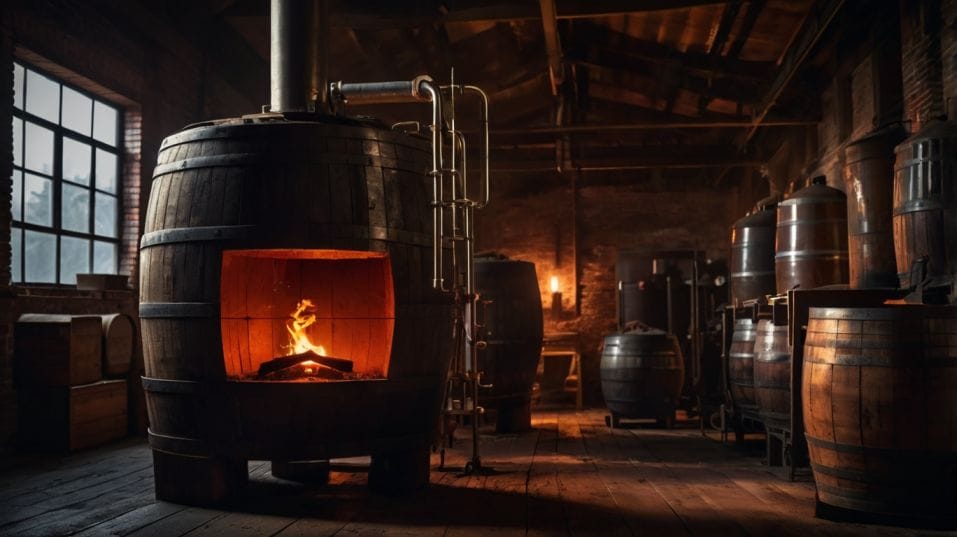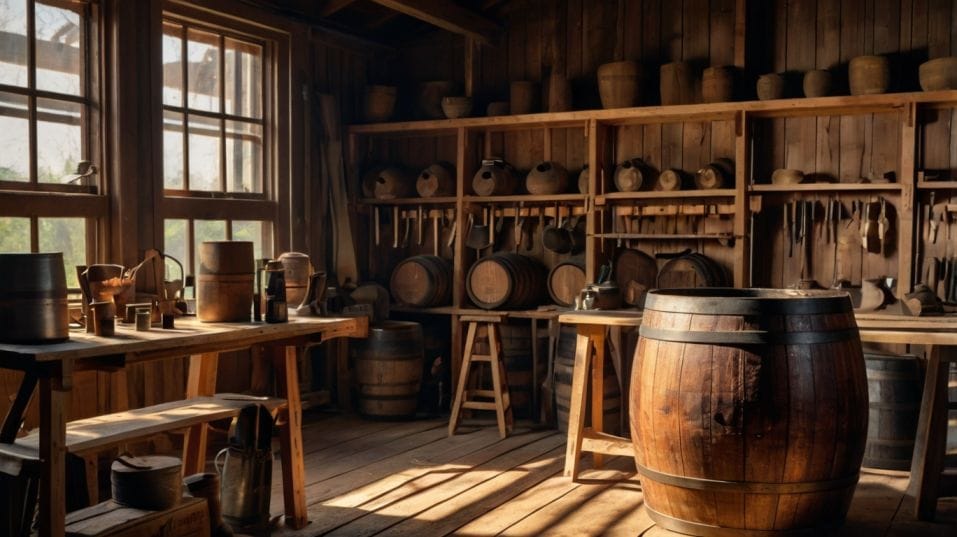Re-charred Barrels: A Recycling Flavor Trick
Discover how re-charred barrels bring depth and complexity to whiskey—perfect for collectors and curious sippers building serious taste.

What if better whiskey didn’t come from newer barrels—but smarter ones? Re-charred casks give wood a second life, unlocking layers that first-use barrels can’t reach.
If you're early in your whiskey journey, understanding this behind-the-scenes move can change how you taste, buy, and collect. Forget the hype.
Real depth comes from technique, and re-charring is one of the most underrated tools in a distiller’s arsenal. Here’s what makes it matter.
What Is a Re-charred Barrel?
Let’s start with the basics.
A re-charred barrel is exactly what it sounds like: a cask that’s already been used to age whiskey (or another spirit), scraped or sanded on the inside, and then exposed to intense flame again—effectively renewing the surface of the wood.
It’s not a shortcut. It’s a controlled reset. Why do this? Because even after a cask has been emptied, the oak still holds chemical potential.
The first char layer is spent—it’s already broken down compounds like lignin and hemicellulose into flavor-active molecules like vanillin and furfural.

But deeper inside, the wood still holds more of those same flavor sources, untouched. Re-charring reactivates that process by removing the exhausted layer and exposing new surface for the whiskey to interact with.
This is where it gets good: the second charring doesn’t behave exactly like the first. It brings out more toasted, mature flavors, rather than the sharp, sweet burst you get from fresh charred oak.
Think less caramelized sugar, more baked spice and slow warmth. The heat penetrates differently, and the spirit extracts differently. The result? A more restrained, complex profile that unfolds gradually.
Where You’ll Find It—and Why It Works
Re-charring didn’t start as a trend—it started as a practical solution.
But over time, it’s become a go-to move for distillers around the world who understand the long game of flavor. Once you know where to look, you’ll see it everywhere whiskey is taken seriously.
From Bourbon to Global Practice
In the U.S., bourbon law requires the use of new, charred oak barrels for every batch. That’s great for intensity, but it also means once a barrel has been used once, it’s out of the bourbon game. So what happens to all those barrels?
They travel. Scotland, Ireland, Japan, India, and more—these regions don’t require new oak. Instead, they rely heavily on second-use barrels, especially ex-bourbon casks.
But not every used barrel is ready to roll. Some need work. Re-charring is how skilled coopers and distillers bring those barrels back to life.
Cultural and Craft Advantages
Scotland pioneered a lot of this technique out of necessity. When new oak wasn’t widely available or affordable, cooperages began “rejuvenating” old barrels—shaving off the inside layer and giving it a new char or toast.
It wasn’t just thrift—it was taste. Re-charred casks could stretch aging potential without overwhelming the spirit, especially lighter styles like Speyside malts or grain whiskies.
Today, re-charring is used deliberately, even in premium expressions. Japanese distillers, for instance, are known for using re-charred barrels to create subtle layers and long finishes.
In India, where heat speeds up maturation, re-charred casks can slow things down and add depth without blowing out the balance.
What It Tastes Like—and What to Look For
Tasting whiskey isn’t just about picking out flavors—it’s about understanding where those flavors come from.
Re-charred barrels leave a fingerprint that’s easy to recognize once you know what to expect. The key is learning to connect technique with taste.
Flavor Signatures
Here’s where things get practical. If you're learning how to taste whiskey—not just drink it—you want to train your palate to notice the influence of the cask. And re-charred barrels have a distinct signature.
First, they soften aggressive tannins. If you’ve ever had a young whiskey that felt raw or bitter, that’s fresh oak hitting too hard, too fast.
Re-charred wood slows that down. It pulls fewer astringent compounds, giving the spirit more time to round out.
Second, they shift the flavor curve. Where first-fill barrels often bring a punch of vanilla, coconut, or fresh wood spice, re-charred barrels lean into roasted, deeper tones.
Think toasted almonds, dark honey, singed orange peel, cocoa, even a hint of smoke—not from peat, but from wood.
Texture and Tasting Clues
The mouthfeel also changes. Spirits aged in re-charred casks often carry more weight—not because of higher proof, but because of richer texture.
The interaction with toasted lignin and oxidized wood sugars gives the whiskey a slightly thicker, silkier body, especially noticeable on the mid-palate and finish.
When reading a label or tasting notes, look for words like:
- “Rejuvenated oak”
- “Re-charred cask”
- “Re-toasted barrel”
- “Active second-fill” These are subtle flags that point to a cask that’s been carefully prepped for a second act—not just reused blindly.
Why It Matters to You
This isn’t just a distillery trick. It’s a tool for you, too—whether you’re buying your next bottle, organizing a tasting night, or building a collection that actually reflects your palate.
Understanding re-charred barrels helps you:
- Spot value in bottles that don’t chase hype
- Recognize aging techniques that produce balance over brute strength
- Decode tasting notes with real-world context, not buzzwords
- Appreciate quieter, subtler whiskeys that reward repeat pours
Most beginners chase the loudest flavors: cask strength, exotic finishes, rare wood types.
There’s nothing wrong with that—until you realize all your bottles start tasting the same. Re-charred casks remind you that finesse matters. That time and heat and craft can unlock flavors no finish can fake.
Final Thoughts
Re-charred barrels aren’t flashy. They’re functional, intentional, and quietly transformative.
The best whiskey-makers don’t just chase boldness—they manage extraction, control oxidation, and build character from the ground (and grain) up. Re-charring is one of their most reliable tools.
So here’s your move: Find a whiskey aged in a re-charred cask. Pour it slow. Taste it twice. Let it teach you something about depth, patience, and the layers that come from doing more with less. Build your palate with purpose. Start with the barrel.




